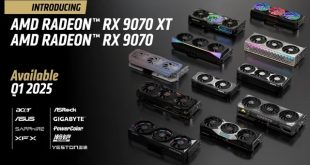Before the RTX 3070 Ti launched, there were rumours that Nvidia would launch a version with 16GB of VRAM. With the RTX 4070 Ti right around the corner, we find it hard to believe Nvidia would still release such a graphics card. However, pictures of a leaked prototype offer evidence that the green team was working on it.
The pictures shared by MEGAsizeGPU show a Founders Edition graphics card labelled RTX 3070. However, the GPU-Z screenshot accompanying the photos of the card shows it's an RTX 3070 Ti. Further inspection of the data shown in GPU-Z shows that instead of the 8GB that all commercially available RTX 3070 Ti cards have, it comes with 16GB of VRAM, suggesting this card is a prototype.
3070(3070Ti?)16G Founder Edition pic.twitter.com/IUad8uJA85
— MEGAsizeGPU (@Zed__Wang) December 30, 2022
The amount of VRAM isn't the only difference between the 16GB and 8GB variants. Although it uses a similar GA104 GPU (GA104-401) with the same CUDA core count (6,144), the base and boost clock frequencies are slightly higher, coming in at 1,590MHz and 1,800MHz, respectively. Another significant difference is the type of memory. While the 8GB variant uses GDDR6X memory, this one would pack GDDR6 modules, which would reduce the memory bandwidth. The memory bus, however, is the same (256-bit).
With this specification set, we're not sure the 16GB variant would be better than the 8GB model. The increase in GPU frequencies likely wouldn't compensate for the lack of GDDR6X memory.
KitGuru says: A 16GB RTX 3070 Ti would have been nice, but at this point, that ship has sailed. There were also rumours of a 20GB RTX 3080, which similarly didn't see the light of day.
 KitGuru KitGuru.net – Tech News | Hardware News | Hardware Reviews | IOS | Mobile | Gaming | Graphics Cards
KitGuru KitGuru.net – Tech News | Hardware News | Hardware Reviews | IOS | Mobile | Gaming | Graphics Cards


